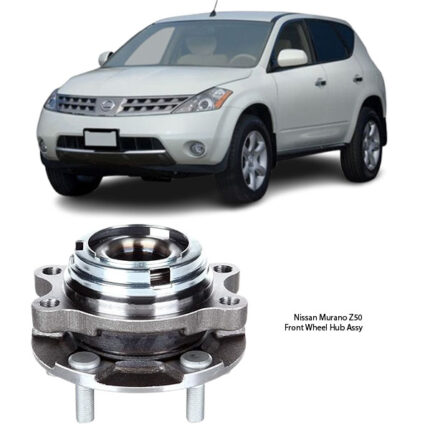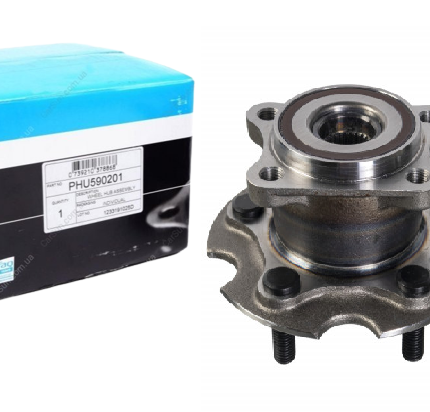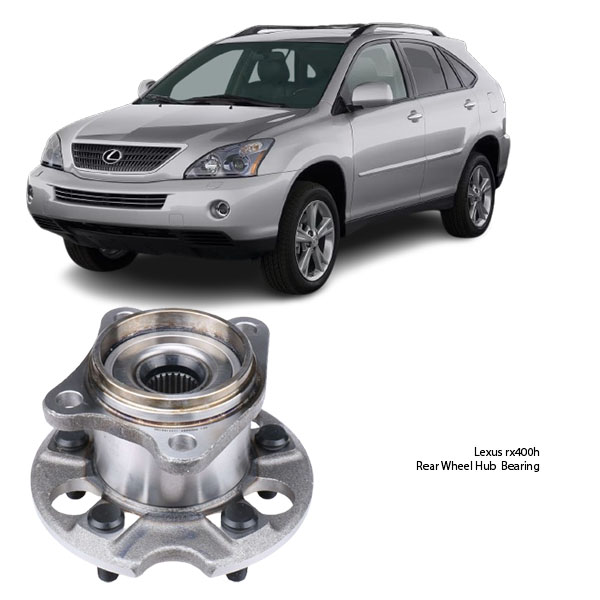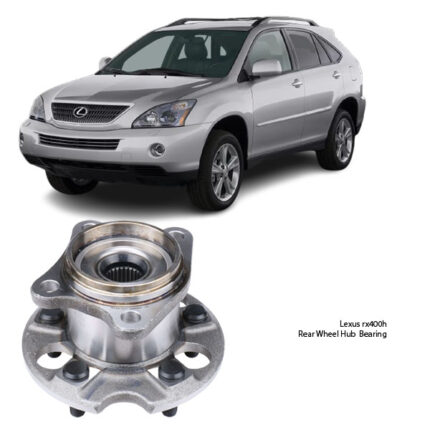Get Lexus RX400H PFI Rear Wheel Hub Bearing PHU2284 in Kenya
The rear wheel hub bearing is a crucial component in a vehicle’s drivetrain, enabling smooth and efficient rotation of the wheels. This bearing supports the vehicle’s weight while reducing friction, allowing the wheels to spin freely with minimal resistance. It is essential for safety, stability, and overall driving performance.
While wheel hub bearings are often overlooked, a failing one can lead to severe issues such as wheel misalignment, vibration, and even wheel detachment. Understanding how they work, their benefits, and how to maintain them is essential for ensuring a vehicle’s longevity and safety.
1. Function of a Rear Wheel Hub Bearing
The wheel hub bearing is located inside the wheel hub assembly, which connects the wheel to the vehicle’s suspension and axle. The key functions include:
1.1 Load Support
The bearing supports the weight of the vehicle and ensures that the wheels can rotate smoothly. It must endure heavy loads, especially when the car is accelerating, braking, or cornering.
1.2 Friction Reduction
Bearings contain steel balls or rollers encased in a lubricated metal ring (race). This setup allows the wheel to spin with minimal resistance, improving efficiency and reducing wear.
1.3 Wheel Rotation Stability
The hub bearing maintains alignment and stability of the wheels, preventing wobbling, vibrations, and uneven tire wear.
1.4 Integration with ABS and Traction Control Systems
Many modern wheel bearings are integrated with ABS (Anti-lock Braking System) sensors and traction control. These sensors monitor wheel speed and relay information to the vehicle’s ECU (Electronic Control Unit) to prevent wheel lockup and skidding.
2. Types of Rear Wheel Hub Bearings
2.1 Ball Bearings
These are the most common and consist of small steel balls enclosed in a metal ring. They are efficient, durable, and used in many standard vehicles.
2.2 Roller Bearings
Instead of balls, cylindrical rollers are used to distribute weight more evenly. These are often found in heavy-duty trucks and larger vehicles due to their higher load-bearing capacity.
2.3 Tapered Roller Bearings
These are specially designed for handling both radial and axial loads. They are commonly used in rear-wheel-drive vehicles, providing better support for cornering forces.
2.4 Sealed Bearings
Most modern vehicles use sealed wheel hub bearings, which come pre-lubricated and enclosed in a protective casing. This prevents dirt, water, and debris from entering the bearing, extending its lifespan.
3. Benefits of a High-Quality Rear Wheel Hub Bearing
3.1 Smooth and Quiet Operation
A well-functioning bearing reduces road noise and vibrations, leading to a comfortable driving experience.
3.2 Improved Fuel Efficiency
By minimizing friction, the bearing helps the wheels rotate effortlessly, reducing energy loss and improving fuel economy.
3.3 Enhanced Safety
A sturdy hub bearing maintains wheel alignment, prevents sudden failures, and ensures effective braking with ABS systems.
3.4 Extended Tire Life
A faulty bearing causes uneven tire wear, but a properly functioning one distributes the load evenly, maximizing tire lifespan.
3.5 Better Handling and Stability
A high-quality bearing ensures precise wheel movement, reducing instability and wobbling, especially at high speeds.
4. Common Signs of a Worn or Failing Rear Wheel Hub Bearing
4.1 Unusual Noises
- Grinding or Growling Sounds – Indicates metal-on-metal contact due to bearing wear.
- Humming or Whining Sounds – Often heard at higher speeds, signaling a failing bearing.
4.2 Vibrations and Wheel Wobbling
- A damaged bearing may cause the wheel to wobble, leading to steering instability.
4.3 Uneven Tire Wear
- If one wheel has excessive wear compared to the others, it could be due to a faulty hub bearing.
4.4 ABS Malfunction
- If the ABS warning light comes on, it might indicate a damaged wheel speed sensor inside the hub bearing.
4.5 Increased Stopping Distance
- A failing bearing can impact braking efficiency, increasing the time and distance needed to stop the vehicle.
5. Maintenance and Care Tips for Rear Wheel Hub Bearings
5.1 Regular Inspection
- Check for play or looseness in the wheel hub by lifting the car and shaking the wheel. Any movement could indicate a worn-out bearing.
5.2 Listen for Noises
- Pay attention to any unusual sounds coming from the rear wheels, especially when turning or driving at high speeds.
5.3 Keep Bearings Clean and Lubricated
- If you have non-sealed bearings, ensure they are cleaned and repacked with fresh grease regularly.
5.4 Avoid Driving Through Deep Water
- Water can seep into the bearings, causing corrosion and premature failure.
5.5 Replace in Pairs
- When one rear wheel hub bearing fails, it’s often best to replace both sides to ensure balanced performance.
6. How to Replace a Rear Wheel Hub Bearing
6.1 Tools Required
- Jack and jack stands
- Lug wrench
- Socket set
- Torque wrench
- Hammer or bearing puller
- Brake cleaner
6.2 Steps to Replace the Bearing
- Lift the Vehicle – Secure the car with jack stands and remove the wheel.
- Remove the Brake Caliper and Rotor – Unbolt the brake caliper and slide off the rotor.
- Detach the Hub Assembly – Remove the bolts holding the hub to the axle.
- Extract the Old Bearing – Use a bearing puller or hammer to remove the old hub bearing.
- Install the New Bearing – Align the new bearing, secure it with bolts, and reassemble the components.
- Test Drive the Vehicle – Check for noise or irregular movement after installation.
7. Conclusion
The rear wheel hub bearing is a vital component that ensures smooth, safe, and efficient driving. It supports the vehicle’s weight, minimizes friction, and plays a crucial role in braking and stability.
By understanding its function, recognizing failure symptoms, and performing regular maintenance, drivers can prevent costly repairs and ensure their vehicle remains in top condition. When replacing a bearing, always opt for high-quality parts to maintain optimal performance and safety.
Follow us on Facebook for more parts.




